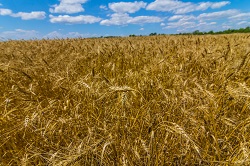Genetic markers signal increased crop productivity potential
The new markers, delivered through the EU-funded ADAPTAWHEAT project, were developed after four years of research into the genes that control flowering time in wheat. This work enabled the project team to identify certain key traits that can help breeders increase wheat productivity. The project has also provided breeders with other new skills and knowledge to select certain physiological traits, along with new data sets that can predict the likely success and potential limitations of certain approaches. Some three SMEs involved in the project will now exploit the tools developed in order to deliver anticipated project outcomes. Wheat is a crucially important foodstuff. In 2013, world wheat production amounted to 713 million tons, making it the third most-produced cereal after maize and rice. Globally, wheat is the leading source of vegetable protein in human food, having higher protein content than other major cereals, and is currently second to rice as the main human food crop in terms of total production tonnage. The results of this project will therefore open up new market opportunities for wheat breeders and potentially increase income for farmers through achieving cost efficiencies. They will also contribute to addressing some pressing concerns facing the global food supply chain. For example, the global population is expected to grow by over a third, or by 2.3 billion people, between 2009 and 2050. According to the UN Food and Agricultural Organisation (FAO), this means that feeding a world population of 9.1 billion people in 2050 would require raising overall food production by some 70 % between now and 2050. Furthermore, demand for cereals, for both food and animal feed uses, is projected to reach some 3 billion tonnes by 2050, up from today’s nearly 2.1 billion tonnes. In this context, achieving production efficiencies in farming – especially cereals farming – has become a priority for both the agricultural sector and policy makers. The ADAPTAWHEAT project will help breeders, farmers and decision makers to identify opportunities to improve crop sustainability and efficiency, and thus help to guarantee global food security. Another pressing concern is climate change. As arable land becomes less productive in certain parts of the world – most notably in developing countries – crop yields will be reduced, which could lead to global wheat shortages in the future if no action is taken. The ADAPTAWHEAT project began by screening the genes that control flowering in over 1 000 different wheat lines and collecting information on the physical characteristics of each line. New laboratory methods were then developed to track the expression of key genes over the flowering period, to identify promising characteristics. The ADAPTAWHEAT project has also sought to uncover exactly how certain genes are influenced by environmental conditions. In order to accomplish this, various wheat lines were planted in locations within and around Europe, to show how genetic flowering time variation can be exploited to mitigate the effects of climate change. The ADAPTAWHEAT project, which received some EUR 3 million in EU funding, was officially completed at the end of December 2015. For further information please visit: ADAPTAWHEAT project website(opens in new window)
Countries
United Kingdom



